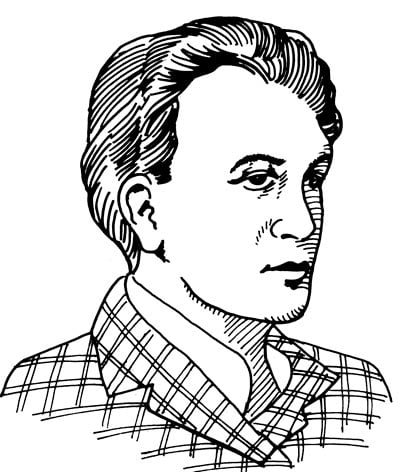
John Logie Baird born on August 13, 1888 pioneered early television with the mechanical scanning system he developed from 1923 to the late 1930s. He is remembered today as an inventor (178 patents) with considerable insight, who was in many ways ahead of his time. Among his pioneering ideas were early versions of colour television, the video disc, large screen television, stereo television, televised sports, and pay television by closed circuit. But he is also a tragic figure who often worked alone for lack of financial backing and lived to see his technical ideas superseded. He was forgotten by the time he died at the age of 58.
Baird did not select television as a field of endeavour so much as he backed into it. As a teen, he had toyed with the notion of pictures by wireless, as had others fascinated with the new technology. Later, having unsuccessfully tried innovation in several more mundane fields (socks, jams, glass razors, shoe soles).
Beginning in 1923 and continuing until 1939, Baird produced a series of mechanical video systems that could scan (and thus transmit and receive) moving images. These offered a crude picture by means of a cumbersome system of large rotating discs fitted with lenses. Baird promoted initial public interest in television with the first public demonstrations in 1925 to 1926, and long-distance transmissions by wire (between London and Glasgow in 1926) and short-wave (trans-Atlantic from London to New York in 1927). By 1928 he was experimenting with ‘phonovision,’ a means of recording his crude images on a phonograph-like disc. His efforts at promotion and sale of ‘televisor’ devices created considerable controversy among experts as to whether television was sufficiently developed to promote public viewing and purchase of receivers.
For many years, the British Broadcasting Corporation (BBC) resisted his efforts to utilize their frequencies and studio facilities in his work. Under pressure from the British Post Office (then in charge of all wire and wireless transmission), the BBC reluctantly began to work with Baird in 1930. Several years of experiments culminated in a regular daily broadcast comparison of his 240-line system with an RCA-like all-electronic 405-line system developed by Marconi-EMI in 1936-37. Baird’s now outmoded approach was soon dropped in favor of the latter’s vastly superior electronic system.
Baird continued developmental work on colour television, now making use of cathode-ray technology, and achieved 600-line experimental colour telecasts by 1940. He continued his effort to perfect large-screen projection colour television during the war, along with some apparent work for the British military. But his health, never strong, gave out and he died on June 14, 1946.
